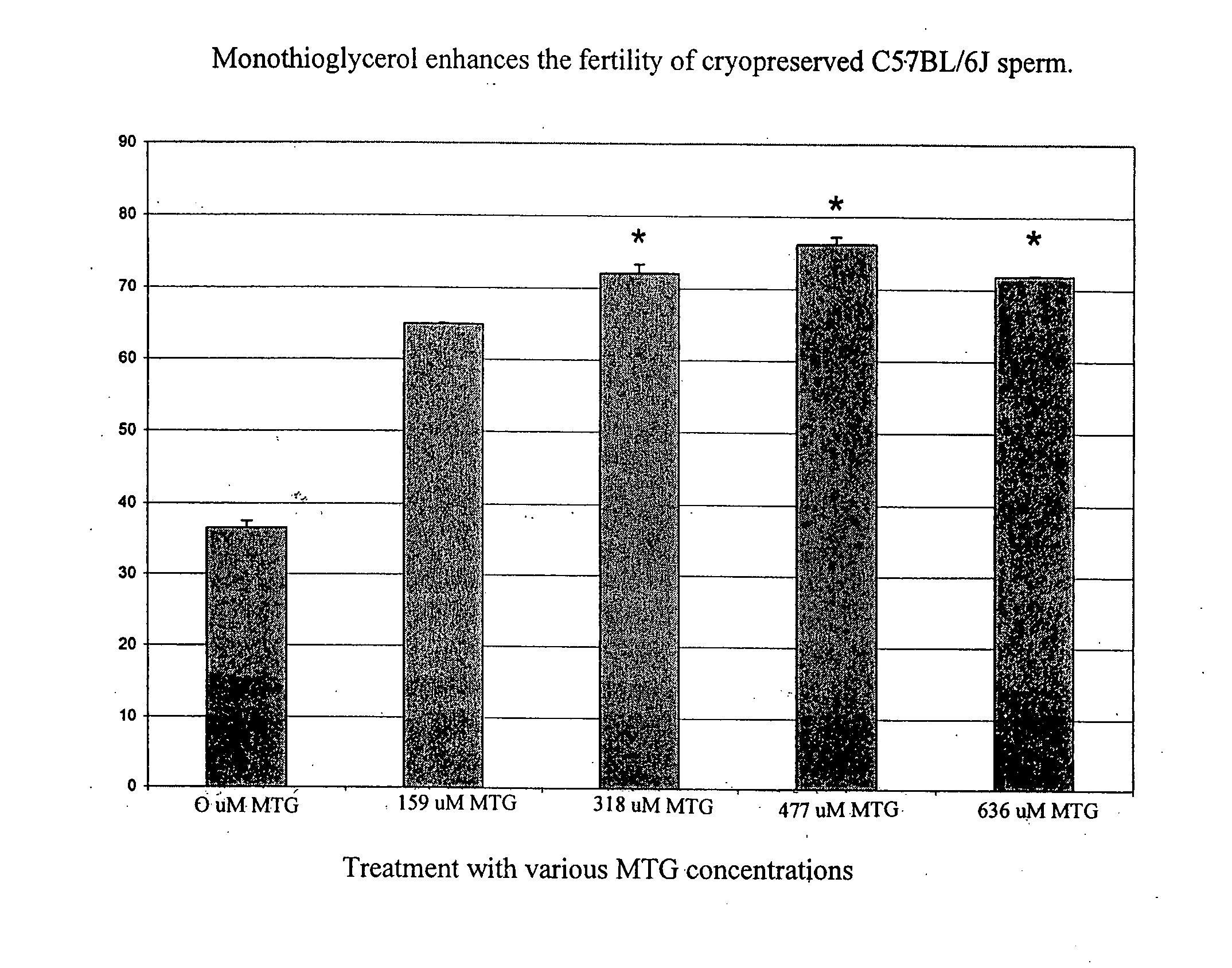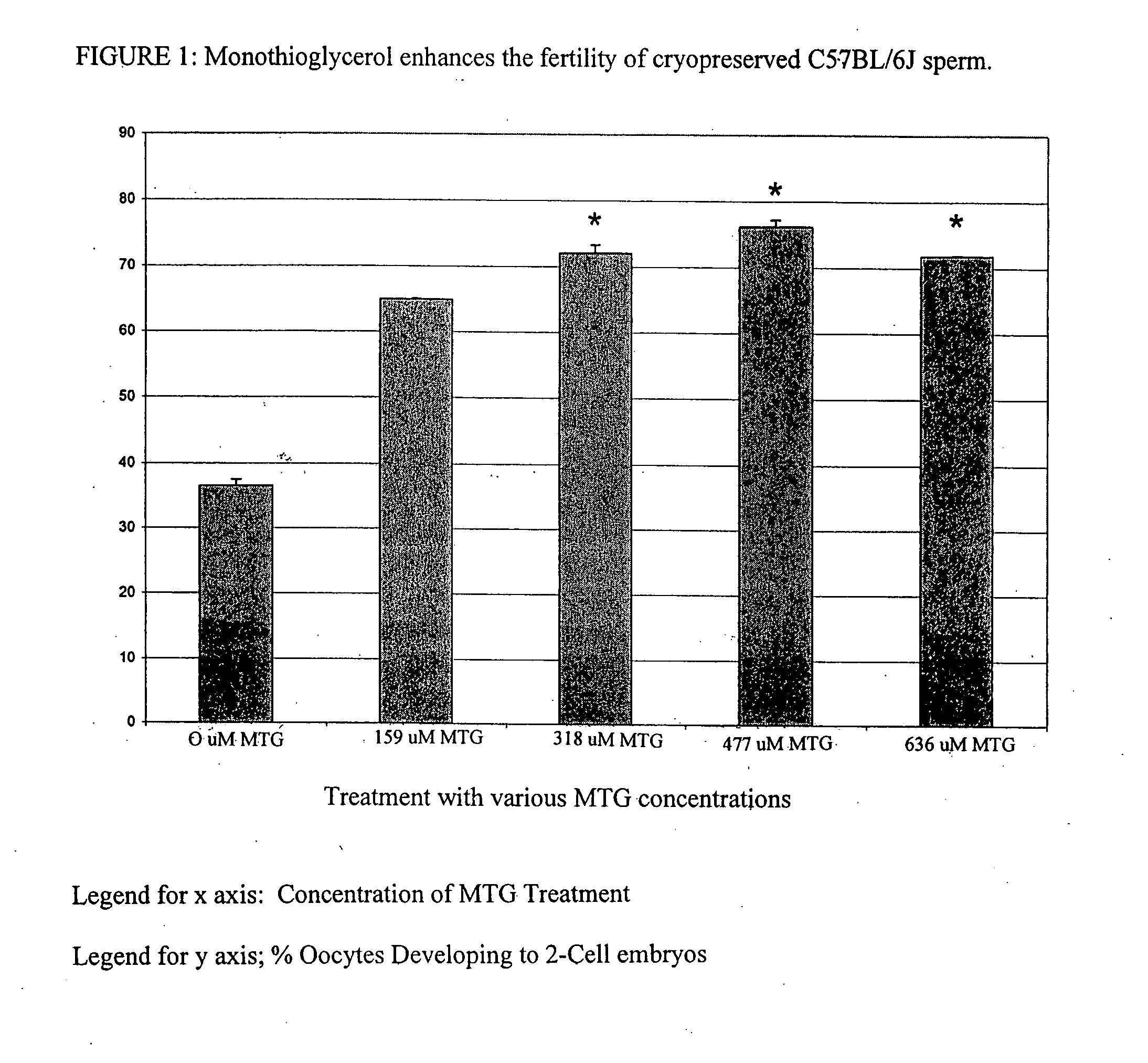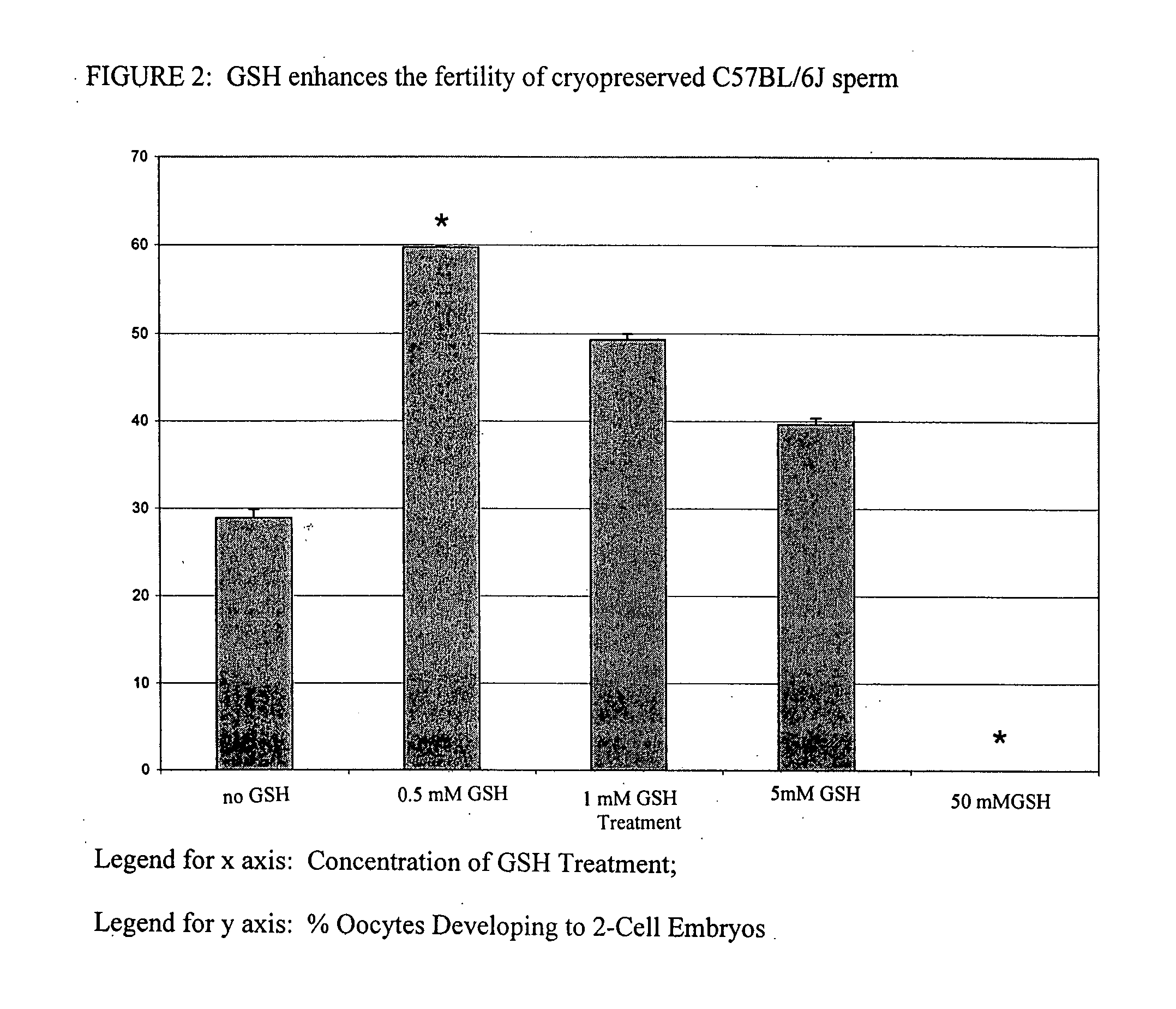Sperm cryoprotective media
a cryoprotective media and sperm technology, applied in the field of sperm cryoprotective media, can solve the problems of inadequate safe preservation of most inbred mouse strains, and achieve the effect of reducing glutathion
- Summary
- Abstract
- Description
- Claims
- Application Information
AI Technical Summary
Benefits of technology
Problems solved by technology
Method used
Image
Examples
example 1
Cryopreservation of Mouse Sperm
[0071] Historic reports have detailed that live born recovery rates when cryopreserved C57BL / 6 sperm are used typically range from 0% to less than 10% (Glenister and Thornton, 2000). Nagakata reports a fertilization rate of 26% (Nakagata and Takeshima, 1993). Applying very complex procedures like the two-step method to select for higher quality sperm at thawing by Bath et al 2003 improve the fertilization rates, but are not adequate for efficient banking (including recovery) of large numbers of C57BL / 6 strains via cryopreserved sperm.
[0072] The Jackson Laboratory has been working on developing a viable, economical approach to archive inbred and especially C57BL / 6 strains. Described herein is a modified cryoprotective media (CPM) that provides an economical approach to this problem.
TABLE 2Comparison of cryopreservation approaches: characterizationand fertilization capacity of C57BL / 6J sperm.Post-thaw % intactPost-thaw % intactCPMacrosomesmembranes% ...
example 2
Cryopreservation of Mouse Sperm with CPM Containing GSH
[0082] Applicants have shown that fertilization rates are greatly and consistently improved when the media and methods described herein are carried out. The epididymides and vas deferentia are extracted from the C57BL / 6J male and placed into the cryoprotective media described herein. They are extracted and placed into an incubated 1 mL collection drop of CryoProtective Medium (CPM), composed of raffinose [1 8% w / v], skim milk [3% w / v] and reduced glutathione [GSH; 500 μM to 50 mM]). Incisions are made in the tissues, allowing the sperm to swim out into the CPM; this is allowed for at least 5 but for less than 20 min. The residual tissues are then removed from the collection drop. Ten micro liters of the sperm sample are loaded into as many as one hundred 250 μL French straws (IMV; Maple Grove, Minn.). Two hundred and fifty microliter straws, containing a 5.5 cm column of CPM, a 2.5 cm column of air, a 0.6 cm column of sperm sam...
example 3
Fertilization Rates with Cryopreserved Sperm from Various Mouse Strains Differ in Response to Cryopreservation with MTG.
[0086] Ten μL aliquots of sperm from a variety of mouse strains are frozen in the absence (CPM-MTG) or presence of monothioglycerol (CPM). A total of at least 6 sperm samples per treatment within a strain are utilized. These represented at least 3 samples from each of at least 2 sets of 2 males whose sperm are pooled at the time of collection and then split into the two treatments. Subsequent to thawing the samples are placed directly into their own 500 μL in vitro fertilization (IVF) drop of Cooks Mouse Vitro Fert (Cook Australia; Queensland, Australia; (Quinn et al., 1995)). After an hour incubation, 4 cumulus intact oocyte clutches from isogenic strains are added to the incubation medium. Following a 4 hr co-incubation, the presumptive zygotes are washed and cultured overnight. Approximately 18 hours later, the fertilization rate is determined (#2-cell embryos / ...
PUM
 Login to View More
Login to View More Abstract
Description
Claims
Application Information
 Login to View More
Login to View More - R&D
- Intellectual Property
- Life Sciences
- Materials
- Tech Scout
- Unparalleled Data Quality
- Higher Quality Content
- 60% Fewer Hallucinations
Browse by: Latest US Patents, China's latest patents, Technical Efficacy Thesaurus, Application Domain, Technology Topic, Popular Technical Reports.
© 2025 PatSnap. All rights reserved.Legal|Privacy policy|Modern Slavery Act Transparency Statement|Sitemap|About US| Contact US: help@patsnap.com



